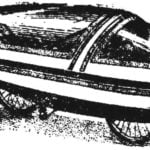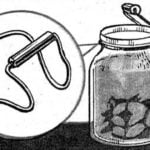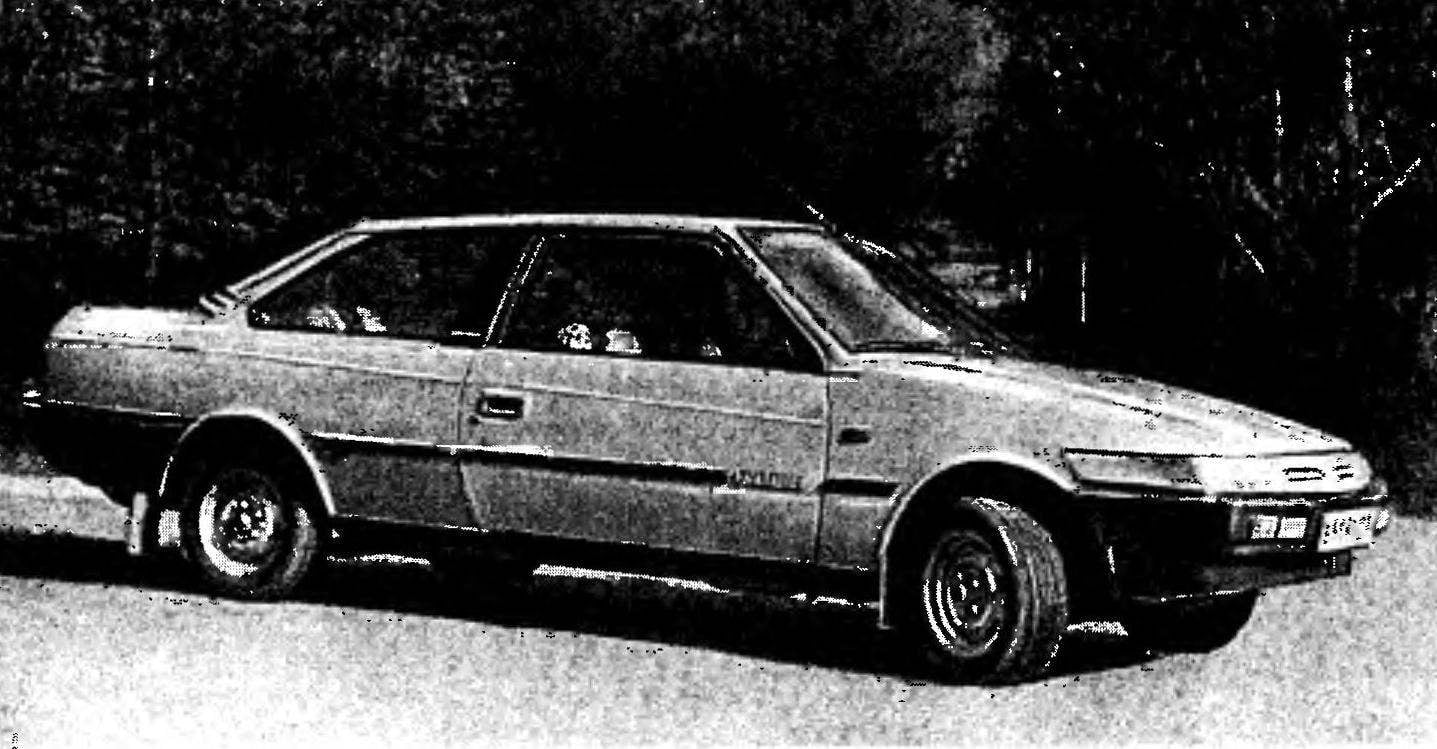Front axle of car — modified “moskvichki” (M-2140): he cut the beam apart to 1 20 mm and is welded (in the conductor) with internal amplification. Thus, the track of the front axle was increased from 1 270 mm to 1390 mm.
Side rods — “the Zhiguli”: the average consists of two side lugs, welded to a thick-walled steel pipe.
The engine is moved forward and as far to the right that allows fine filter oil. This is done to ensure that the shift lever of the gearbox was not under the dashboard, and the axis of the motor coincides with the axis of a reducer of the rear bridge. Engine mounted exhaust manifold from the M-21412, which allowed to reduce the height of the carb on the 26.5 mm and to place the engine under the hood. Air filter — inertial type, wazowski.
Gearbox — four-speed, the car GAZ-24. Input shaft, output shaft and extension has been modified to ensure that the box is connected to the engine. The last box is installed using an adapter plate, cast aluminum alloy. By the way, installed so the box is easily removed using ordinary open-end wrench “1 7”. I also note that, despite the very dense packaging in the engine compartment of all units available for service and repair. Just remove the battery and underneath the frame — open access generator, starter, thermostat, cushion engine mount and upper control arm. On the opposite side of the engine easy to remove the exhaust manifold with the host pipe, and the engine freely disassembled. But to disassemble the motor, it is not necessary to remove the hood — the engine easily and conveniently removed from the engine compartment.
The car originally used the driveshaft from “Volga” GAZ-24, but soon had to be replaced VAZ, since balancing the first left much to be desired. True, it required refinement and extension of the secondary shaft gearbox. The solution to this may seem unnecessarily complicated, but in order to do something, you need at least two things: time and money… For my “Natasha” in the first place in the process of its creation was the reliability, simplicity and a large margin of safety. This determined the choice of gearboxes. A propeller shaft with outboard bearing and flexible coupling made this unit more soft and silent in operation.
Rear axle of my car — VAZ, model “2101”. However, with a replaced by a pair of gears — gear ratio of 3.9. The bridge has been modified for fitting the suspension spring from the car M-41 2 with two extra leaves. Telescopic shock absorbers are also from the M-41 2. To install the rear axle wheels with five mounting points of the wheels, applied a homemade flanges. Thus the rear track of the bridge has increased from 1320 mm to 1370 mm, which is very positive impact on vehicle stability.
The radiator of my car — car M-2141, with a diffuser, a fan on the pump and the electric fan in front of radiator.
Brake system two-circuit hydraulic system is made of copper tubes with a diameter 6×1 mm. It is equipped with a pressure regulator in the brake system of the rear wheels, and a signal device.
The fuel tank is made of galvanized steel sheet, soldered at the joints, covered with two layers of fiberglass epoxy resin and painted with enamel. Tank is installed behind the rear seatback. This fuel tank location was chosen for reasons of safety and for a more rational distribution of masses along the length of the car. The fuel level sensor made from wazowski.
For wiring used as part of the harness from the car VAZ-2105. From the same machine was used almost all the relays.
Windows is a modified mechanisms from the rear doors of the vehicle M-2141 2 with an electric drive. Wipers — from VAZ-2108.
Handles opening of doors (outside) and the door locks — from the VAZ-2107. Seats for the handles are offset by 15 mm to the outside through the punch, because these mechanisms would not fit between the glass and the door panel. Internal lock knob and the clips from M — 2141 2. All of these mechanisms are mutually modified, and the interaction between them is provided by the scenes.
Each door hung with three hinges, same batches-door VAZ-2108. Feature the red reflectors and red lights. Inside the doors are also loudspeakers of the system. Glass doors from the car VAZ-2108.
Spare tire, Jack, pump, keys are arranged in a recess of the trunk located between the spars. The boot capacity of 0.37 cubic meters.
Bumpers from the VAZ-2108: front without alteration, and the back modified to fit the rear of the car. Lights from M-2140 electric wiper VAZ-2108. Tail lights — M-2141 2.
At the equipment of salon used the instrument panel from the VAZ-2107 with a larger part of it in accordance with the curvature of the windshield. The panel smoothly into the console, which control buttons the vehicle’s electrical systems.
The front seats from the “eight” back — from “five”. Seat belts — inertia type. The ceiling is covered with the fabric exactly the same as on the cars of type VAZ.
I would palter if I said that everything was fine during the manufacturing process and operation of my “Natasha”. In particular, a lot of trouble gave me a production engine the Ufa engine plant. The number of production defects with considerable difficulties to resolve failed, but unfortunately all of NV… but to the car I claim virtually no.
V. ZHIVOLUB
Recommend to read
 RECUMBENT MADI
RECUMBENT MADI
Invented and built unusual to our eyes the car of the students of the Moscow automobile and road Institute N. Belov, N. Dubinin, Yu Medovikov, A. Ortega-Gil and O. Khokhlova, under the... ALMOST LIKE A CAN
ALMOST LIKE A CAN
During the canning of vegetables and fruits have to deal with wet and hot banks that need to move or carry. So they don't burn or slip out of hands, lignite from a piece of wire with a...
 In recent years, publication in the journal “modelist-Konstruktor” of the Amateur autocostruzione Willy-nilly suggests that homebrew almost refused to create a full character, complexity and depth of cars in favor of predominantly simplified in design “midget” two stroke engines. We are glad to inform that this is not so. Proof of that is created by our reader V. Revoluta from Stavropol NRA beautiful design passenger car “Natasha”.
In recent years, publication in the journal “modelist-Konstruktor” of the Amateur autocostruzione Willy-nilly suggests that homebrew almost refused to create a full character, complexity and depth of cars in favor of predominantly simplified in design “midget” two stroke engines. We are glad to inform that this is not so. Proof of that is created by our reader V. Revoluta from Stavropol NRA beautiful design passenger car “Natasha”.